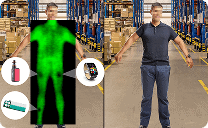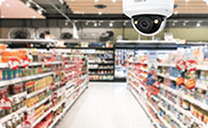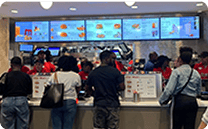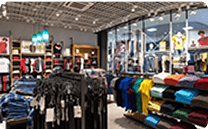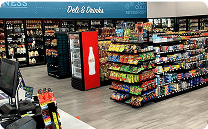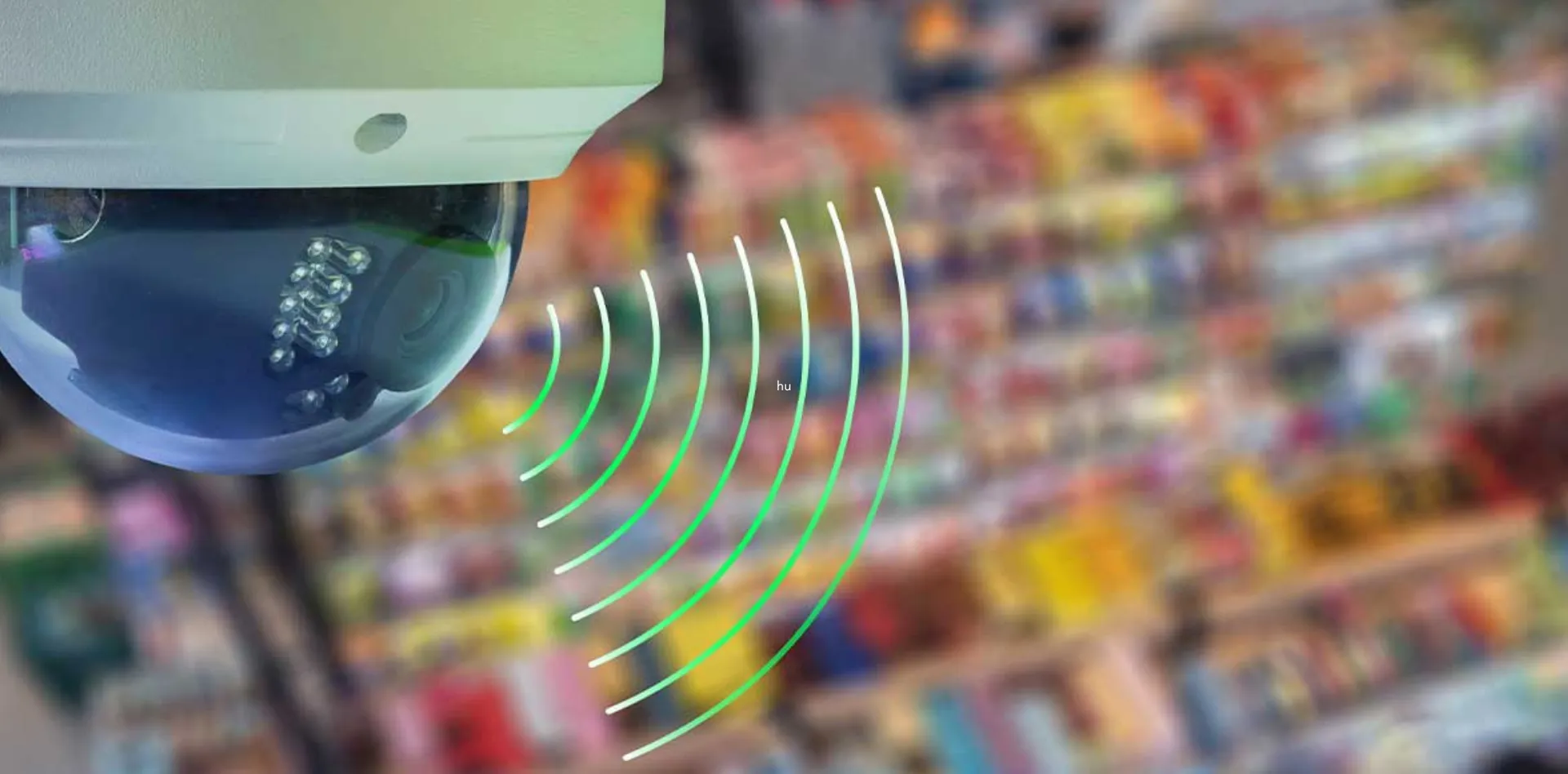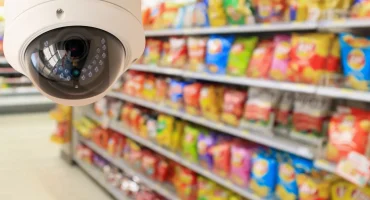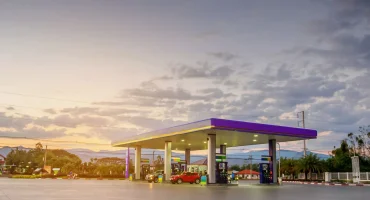In This article
Convenience stores are a vital part of the economy, providing quick snacks, beverages, and other essentials. It’s estimated that about 100 million Americans shop at convenience stores each day.
But convenience stores can be particularly vulnerable to fraud and theft, which is why having a convenience store loss prevention plan in place is crucial. Learn more about improving convenience store loss prevention through security camera systems.
What Is Loss Prevention?
Unfortunately, any retail business can become a victim of internal or external theft. It’s not an issue exclusive to convenience stores. However, they are especially vulnerable. That’s why convenience stores need a loss prevention strategy: a set of practices that helps a business preserve its profits.
Any purposeful or accidental action by a customer or employee that negatively affects the bottom line can be characterized as a preventable loss. These include:
- Theft: This includes the stealing of cash or product from a store. Theft may be internal (conducted by employees) or external (conducted by customers or other individuals outside the company).
- Operational errors: This form of unintentional loss occurs when employees make a mistake, such as miscounting a till, undercounting inventory, or incorrectly applying sales or discounts.
- Supplier fraud: This type of loss may be intentional or unintentional and occurs when a vendor or supplier acts unethically, skips deliveries, or does not provide the correct amount or type of agreed-upon goods.
- Shrinkage: Simply put, this is when a store has fewer items in stock than its recorded inventory reports. Shrinkage may be due to administrative errors, supplier mistakes, shoplifting, or internal theft by employees.
Why Are Convenience Stores Vulnerable?
While all retail environments can experience losses or shrinkage, convenience stores in particular are targets of theft. Convenience store robberies account for over 10% of all robberies in the United States, with an average value of $1,028 stolen per crime — that means over $1.6 million was stolen from convenience stores over roughly 16,000 annual offenses.
Several factors put convenience stores at risk, such as:
- Hours of operation: Convenience stores are often open late or even 24 hours a day. This puts them at risk of being targeted during late evening or early morning hours when there are fewer people around to intervene or witness the crime.
- Store layout: C-stores tend to have a large amount of inventory in a small space. This means there are narrow aisles or tight spaces that bad actors can use to their advantage.
- Ownership: Independently owned convenience stores tend to be more at risk than large national or international chains, which have more resources to put toward security measures.
- Location: Convenience stores can be in more isolated areas – such as near large parking lots or highway rest stops – than other types of retail environments. These locations have fewer eyewitnesses and less lighting and activity around the store.
- Cash on site: Convenience stores are likely to have cash onsite, which makes them an ideal target for criminals.
Convenience store security cameras can help reduce incidents of shoplifting and robbery – especially when they’re part of a broader loss prevention framework.
Convenience Store Loss Prevention Strategies
C-store owners need a comprehensive loss prevention plan to protect their profit margins in a competitive industry. A good loss prevention strategy should:
- Protect a company’s bottom line
- Prevent shoplifting and other types of crime
- Improve both customer and employee experience
- Reduce operational and administrative errors
- Promote a culture of responsibility and safety
Many convenience stores are already practicing some forms of loss prevention – they may have a security camera or use an armored car service to transport cash offsite. To improve your loss prevention strategy, you should focus on appropriately training your staff and setting them up for success by creating a secure physical environment.
Invest in Staff Training
Loss prevention starts with the staff onboarding process and training. This means that each convenience store employee should be trained on how to receive deliveries and inventory merchandise. Any employee operating the cash register must know proper cash handling procedures and how to check for fraudulent currency. Additionally, make sure all employees know how to respond to suspicious customer activity.
You can also implement methods that minimize the chance of theft taking place before it happens. Train employees to greet each customer who enters the store. Acknowledging each customer makes them recognize that the staff is aware of their presence. If the individual needs assistance, they know who to ask, and if they are planning to shoplift, they will be deterred.
Implement Physical Security Systems
A physical security system that shoppers can see when they come in is a great way to deter theft and have footage to refer to when theft does happen. Those are two major reasons why c-store owners should use surveillance cameras throughout their businesses. Convenience store security cameras should ideally be placed:
- At the store entrance
- At all cash registers or POS terminals
- At delivery areas or loading docks
- Near high-value items, such as alcohol
Intelligent video cameras with built-in analytics software can be programmed to alert an owner if suspicious activity occurs and are invaluable if you need to identify criminals after a theft occurs. Parking lot cameras are also helpful for capturing license plate numbers and vehicle descriptions.
Some convenience store security camera systems also use public view monitors and mounted TV screens that display video surveillance in real-time. That lets customers know they are being watched and helps dissuade criminal activity. Simple signage that lets customers know the store has security cameras can be effective as well.
Choose DTiQ for Tailored Convenience Store Loss Prevention Solutions
Looking for convenience store security software that protects your people and profits? At DTiQ, we develop customizable security and loss prevention solutions designed to meet C-stores’ unique needs.
Our comprehensive business intelligence platform includes artificial intelligence and data analytics to identify suspicious activity that may take place in your convenience store. In the event of a break-in, you receive live support from DTiQ with recording and two-way audio that lets intruders know the police have been notified. And because we know C-stores work around the clock, we provide 24/7 customer support.
With our integrated mobile app, you can monitor your C-store and receive alerts even when you’re working remotely. Plus, DTiQ’s subscription-based model means you always have the tools you need to guard your business.
Book a demo today for more information about our custom solutions and pricing.
